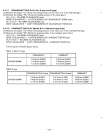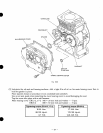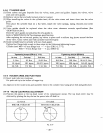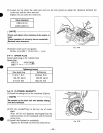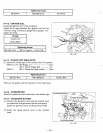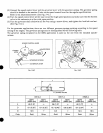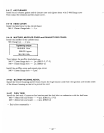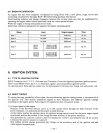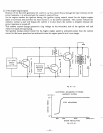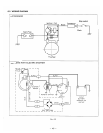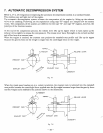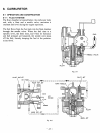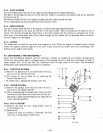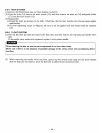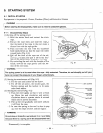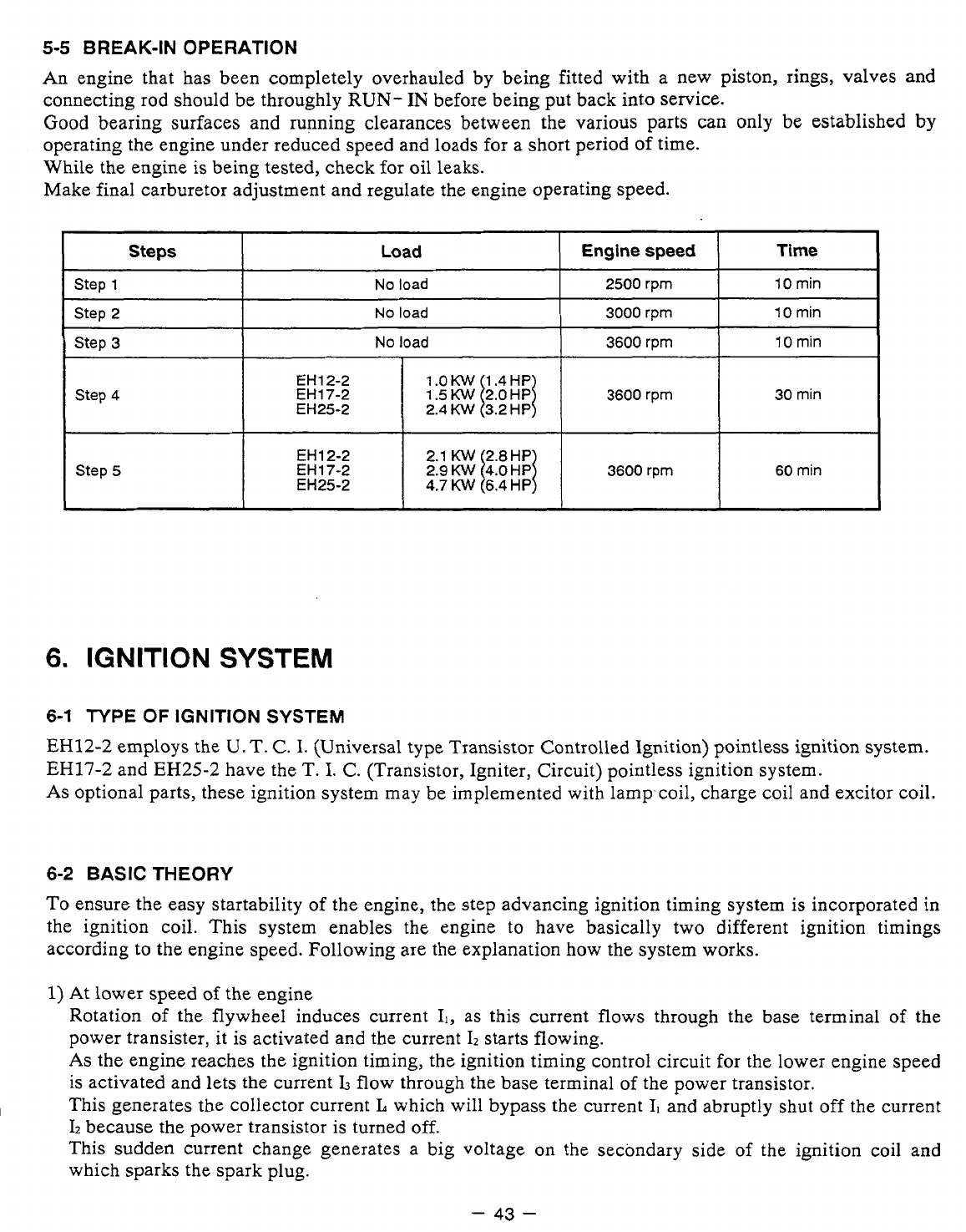
5-5
BREAK-IN
OPERATION
B
An
engine that has been completely overhauled by being fitted with a new piston, rings, valves and
connecting rod should be throughly
RUN-
IN
before being put back into service.
Good bearing surfaces and running clearances between the various parts can only be established by
operating the engine under reduced speed and loads for
a
short period of time.
While the engine
is
being tested, check
for
oil
leaks.
Make final carburetor adjustment and regulate the engine operating speed.
Steps
10
min
3600
rpm
No
load
Step
3
10
min
3000 rpm
No
load
Step
2
10
min
2500 rpm
No
load
Step
1
Time
Engine
speed
Load
1
Step
4
EH12-2
EH17-2
EH25-2
1
1.5
KW
b.OHPI
1
3600 rpm
1.OKW
1.4HP
2.4KW 3.2HP
30 min
Step
5
EH12-2
EH25-2
EH17-2
1
$:A
f::
1
3600 rpm
60 min
4.7KW
6.4HP
6.
IGNITION
SYSTEM
6-1
TYPE
OF
IGNITION SYSTEM
EH12-2
employs the
U.
T.
C.
I.
(Universal type Transistor Controlled Ignition) pointless ignition system.
EH17-2
and
EH25-2
have the
T.
I.
C. (Transistor, Igniter, Circuit) pointless ignition system.
AS
optional parts, these ignition system may be implemented with lamp.coi1, charge coil and excitor coil.
6-2
BASIC
THEORY
To
ensure the easy startability
of
the engine, the step advancing ignition timing system is incorporated in
the ignition coil. This system enables the engine
to
have basically two different ignition timings
according to the engine speed. Following are the explanation how the system works.
1)
At lower speed
of
the engine
Rotation
of
the flywheel induces current
I,,
as this current flows through the base terminal
of
the
power transister,
it
is activated
and
the current
IZ
starts flowing.
As
the engine reaches the ignition timing, the ignition timing control circuit for the lower engine speed
is activated and lets the current
L
flow through the base terminal of the power transistor.
This generates the collector current
L
which will bypass the current
11
and abruptly shut
off
the current
IZ
because the power transistor is turned
off.
This sudden current change generates a big voltage
on
the secondary side of the ignition coil and
which sparks the spark plug.
8
-
43
-




